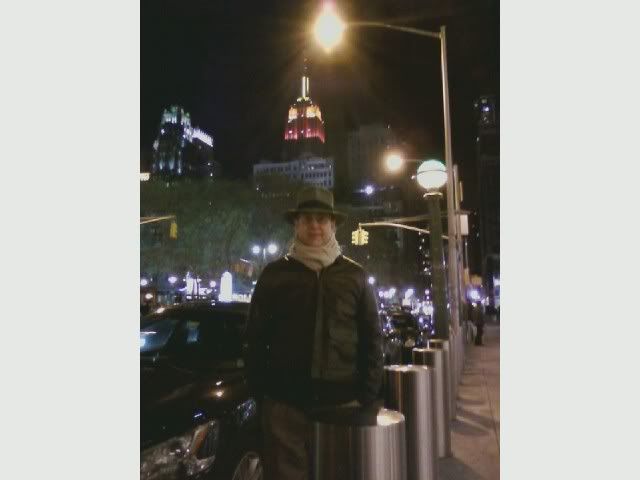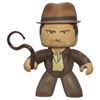Why Epaulets?
Moderators: Mike, Cajunkraut, Tennessee Smith
- Indiana MarkVII
- Professor of Archaeology

- Posts: 1073
- Joined: Wed Jan 04, 2006 8:00 pm
- Location: Phoenix, Arizona USA
Why Epaulets?
Epaulets seem to be on every "adventure shirt" including Indy's and a lot of military and pilot shirts. Can anyone enlighten me as to their original and continued purpose? I have always liked the look, but for maybe other than keeping a camera strap secure, what is or was their purpose?
- Indiana Jake
- Dig Leader

- Posts: 576
- Joined: Wed May 07, 2008 3:41 am
- Location: Seated in a Pan Am Sea Plane, flying over a map of Glendale, CA
- Contact:
Epaulets were designed to keep gear from slipping off of your shoulder. Things that have a shoulder strap, like messenger bags, guns and holsters with lanyards, binoculars, canteens, etc. That is what the button is for so you can put the strap underneath it.
Jake
Jake
Last edited by Indiana Jake on Tue Nov 04, 2008 3:40 am, edited 1 time in total.
- Indiana Joosse
- Dig Leader

- Posts: 594
- Joined: Sun Sep 07, 2008 3:38 am
- Location: Uithoorn, the Netherlands
Originally they were used to keep fancy-schmancy scarves, sashes, and other ordorments in place by the French Militia. Since they were mainly used by the French officers, epaulettes were used to signified military rank.
Now I think they are used to keep gear in check, clip radio mics to, etc. I clip a LED flashlight to mine when ones needed for what I am doing...other than that they are just part of the shirt design.
Now I think they are used to keep gear in check, clip radio mics to, etc. I clip a LED flashlight to mine when ones needed for what I am doing...other than that they are just part of the shirt design.
- Indiana MarkVII
- Professor of Archaeology

- Posts: 1073
- Joined: Wed Jan 04, 2006 8:00 pm
- Location: Phoenix, Arizona USA
- Indiana Joosse
- Dig Leader

- Posts: 594
- Joined: Sun Sep 07, 2008 3:38 am
- Location: Uithoorn, the Netherlands
- Tennessee Smith
- Site Admin

- Posts: 10583
- Joined: Mon Jul 02, 2007 3:47 pm
- Location: Everything we need is right here.
- Mark Brody
- Professor of Archaeology

- Posts: 938
- Joined: Fri May 04, 2007 7:16 pm
- Location: Omaha
The military only uses them now to attach rank. As far as I know, original epaulets were nothing but rank, and not the sewn on strap that the Indy shirt has. I don't think there ever was a practical purpose for them. I think it's always been to show off rank, and nothing more.
Wikipedia agrees with me...
http://en.wikipedia.org/wiki/Epaulette
Wikipedia agrees with me...
http://en.wikipedia.org/wiki/Epaulette
I believe it is very plausible that epaulets have been used for all of the above listed purposes over the years, despite what Wikipedia says.
Sorry about the off-topic. I just wanted to make that brief point.
I'm not saying that Wikipedia is right or wrong in this case, I just want to point out that ANYONE can upload information to Wikipedia. It is really not a reliable primary source of information and should only be used to get a sense of direction for other sources.Mark Brody wrote:Wikipedia agrees with me...
http://en.wikipedia.org/wiki/Epaulette
Sorry about the off-topic. I just wanted to make that brief point.
- Mark Brody
- Professor of Archaeology

- Posts: 938
- Joined: Fri May 04, 2007 7:16 pm
- Location: Omaha
I agree with you. I wore a uniform with epaulets from 1989 to 2004. The only use I found for them, besides the rank designation as you pointed out, was a handy spot to hang my sunglasses, or a radio mic.Mark Brody wrote:True, Wikipedia is not the most reliable source, but as someone who's worn uniforms with epaulets for the past 8 years (both the sewn on ones and the gold and silver shoulder boards), I've never heard of, or seen any other practical use for them.
I still don't know the history of them though. Probably French though. They come up with silly things like that a lot.
EDIT - after re-reading my post, maybe I don't agree with you after all. Since I just described two practical uses, even though they may be 'off-label' uses.
Last edited by Cammer on Wed Nov 05, 2008 4:14 pm, edited 1 time in total.
- TheMechanic
- Dig Leader

- Posts: 597
- Joined: Fri May 16, 2008 4:56 pm
- Location: In a skillet with potatoes & onions
Safari hunters have used epauletts for 100 years to secure binoculars, cameras, canteens and game bags to keep them from slipping off their shoulders.
I buttoned my 7 year old sons Indy bag strap under his epaulett this Halloween because it kept slipping around.
If you'll notice, all Safari shirts to this day have epauletts for that very reason.
Police uniforms have them and they are used to secure their radio receivers.
I buttoned my 7 year old sons Indy bag strap under his epaulett this Halloween because it kept slipping around.
If you'll notice, all Safari shirts to this day have epauletts for that very reason.
Police uniforms have them and they are used to secure their radio receivers.
- Bufflehead Jones
- Legendary Adventurer

- Posts: 3191
- Joined: Sat Feb 14, 2004 10:11 pm
- Location: Maryland
- GoldenHistorian
- Professor of Archaeology

- Posts: 805
- Joined: Thu Jun 07, 2007 1:40 pm
- Location: Doncaster, England
-
Drhenryindianajones
- Laboratory Technician

- Posts: 189
- Joined: Fri Apr 30, 2004 6:11 pm
- Location: england
- Contact:
Epaulettes are a French invention, coming from the French word epaule for "shoulder." In the days before binoculars and "fatigue" style uniforms, soldiers needed to be able to identify their officers in the heat of battle. Epaulettes with their fringe are noticeable from a distance and helped identify officers. Conventions on whether to wear the epaulettes on the right shoulder, left shoulder, or on both shoulders, have changed over the years, and the French decided epaulettes should be worn on both shoulders by officers.
In the United States, military officers followed the French style of epaulettes as late as the Civil War. After that time, however, they became less popular. The British found that epaulettes, impressive-looking as they are, can be seen by snipers as well as the average soldier or sailor. When it became obvious that snipers were picking off the officers because their epaulettes made them more visible, the British armed forces removed them from the uniform. The United States military probably removed them for the same reason. Epaulettes are still seen occasionally on the most formal dress uniforms.
Epaulettes have also been used as fashion statements for women's gowns. It has often been common for women's dress to mirror uniforms when their countries are at war. Touches such as gold braid and brass buttons on garments reinforce this look, and women have worn epaulettes on formal gowns to give their fashions a military air. Designers sometimes still incorporate this most recognizable insignia into their couture.
Over the past 200 years or so, epaulettes have come to signify flashy military authority in the United States, and someone lampooning an officer will often wear outsized epaulettes for comic effect. However, epaulettes, as odd as they may seem now, once did serve an important purpose for the men who wore them, and for the men under their authority
In the United States, military officers followed the French style of epaulettes as late as the Civil War. After that time, however, they became less popular. The British found that epaulettes, impressive-looking as they are, can be seen by snipers as well as the average soldier or sailor. When it became obvious that snipers were picking off the officers because their epaulettes made them more visible, the British armed forces removed them from the uniform. The United States military probably removed them for the same reason. Epaulettes are still seen occasionally on the most formal dress uniforms.
Epaulettes have also been used as fashion statements for women's gowns. It has often been common for women's dress to mirror uniforms when their countries are at war. Touches such as gold braid and brass buttons on garments reinforce this look, and women have worn epaulettes on formal gowns to give their fashions a military air. Designers sometimes still incorporate this most recognizable insignia into their couture.
Over the past 200 years or so, epaulettes have come to signify flashy military authority in the United States, and someone lampooning an officer will often wear outsized epaulettes for comic effect. However, epaulettes, as odd as they may seem now, once did serve an important purpose for the men who wore them, and for the men under their authority















